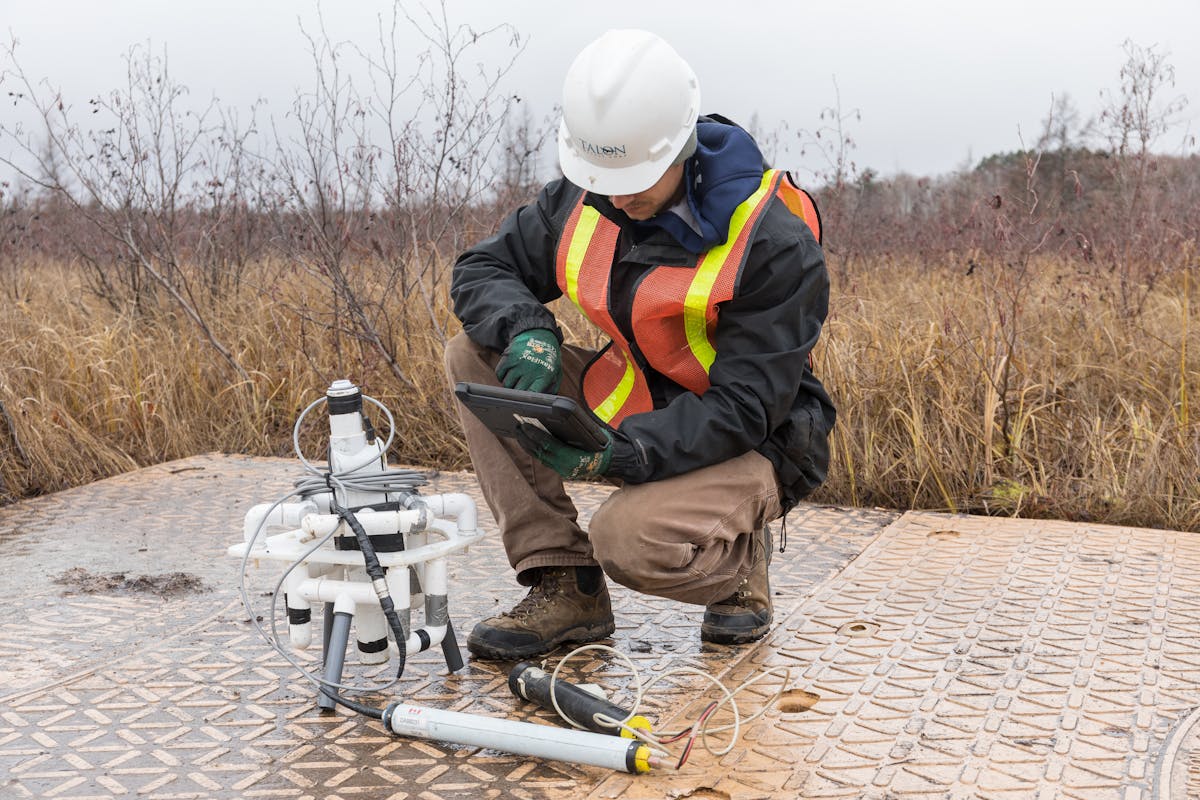Talon Metals, the company behind a proposed nickel mine in northern Minnesota, now plans to build its processing plant in North Dakota and has received a $114 million grant from the U.S. Department of Energy toward the project.
One of the reasons for the move to North Dakota: the environmental concerns surrounding the Minnesota mine in Tamarack, about 50 miles west of Duluth.
"Removing the processing facilities from the Tamarack mine site in Minnesota significantly reduces land disturbance and the scope of environmental review and permitting," Talon said in a prepared statement.
The move to North Dakota will reduce surface disturbance at the Tamarack site by about half, said Todd Malan, chief external affairs officer of Talon. As a result, both in terms of scope and workload, the permitting process is significantly reduced since they would apply only to the underground mine and rail-loading surface operations.
Talon's Minnesota plans are under pressure from environmental groups and the Sandy Lake Band of Mississippi Chippewa, which still opposes the mine.
Talon and its partner — Rio Tinto, the second largest global mining company — would create a rarity in the United States with the Tamarack project: a mine whose primary product is nickel, with copper as a secondary mineral. It already has signed a six-year contract with Tesla to provide the electric vehicle company with minerals.
Last week, the company learned it is one of 21 mining projects selected by the Department of Energy to receive a piece of the $2.8 billion set aside through infrastructure legislation to support the acceleration of the electric vehicle industry in the U.S.
The proposed battery-minerals processing plant would locate to an industrial brownfields site in Mercer County, N.D., processing feedstock from Talon's underground Tamarack mine and other potential sources in North America. Talon is negotiating to buy the site.
The North Dakota announcement also came last week.
"Talon plans to create 150 jobs and invest significant capital in [Mercer County]," North Dakota Gov. Doug Burgum said in a statement. "By increasing domestic production of nickel and other battery minerals and reducing our reliance on foreign sources, we can strengthen our economy, our communities and our national security.''
The facility, Burgum said, would require a $433 million investment, including the $114 million from the Department of Energy.
Originally, Talon said the mining and processing facility would create 450 jobs in Aitkin County. In Minnesota, Talon still will hire 150 union steelworkers after Minnesota permits are issued, joining the 75 workers already doing exploratory work at the Tamarack site, Malan said.
Malan said the project is gaining support in the area.
"In our community meetings, participants have said they are proud that Aitkin County can supply vital ingredients for the domestic battery supply chain and address America's dependency on China and Russia for minerals like nickel," Malan said. "They also recognize that the nickel we can mine in Minnesota is infinitely recyclable and will be part of the U.S. battery supply chain for generations."
The Sandy Lake community that is part of Mille Lacs Band of Ojibwe is still opposed to the mine. Chief Executive Melanie Benjamin of the Mille Lacs Band said tribal land is within a couple miles of the proposed Tamarack mine.
"Talon Metals' announcement that it intends to move components of its nickel processing operations to North Dakota acknowledges the risks that this proposed mine poses to our community and land," she said in a statement. "A change in location [for the facility] does not eliminate concerns about the impact that a nickel mine ... will have on the environment, surrounding communities, and our band's cultural practices."
The Minnesota Center for Environmental Advocacy is awaiting environmental filings.
"They haven't done their environmental review and permitting, yet there's already $114 million committed from DOE," said Aaron Klemz, chief strategy officer of the Minnesota Center for Environmental Advocacy. "Taking tailings out of that wet area to North Dakota will no doubt help them meet water-quality standards because they wouldn't process on site. It's higher-grade ore … and the economics probably work to make it possible to ship by rail to North Dakota. We won't know until we see their regulatory proposals.''
The group has said the U.S. industry needs to drastically increase recycling rates before building new mines to increase battery materials. The environmental groups also oppose the proposed Polymet mine at the site of the former LTV mine at Hoyt Lakes, and another by Twin Metals near the Boundary Waters Canoe Area.
Anglo-Australian Rio Tinto, the world's second-largest mining company, began a serious prospecting program near Tamarack 20 years ago. In 2018, Rio signed on Talon as a joint venture partner for the mine. Talon, based in the British Virgin Islands, now has a 51% stake in Tamarack.
There is only one high-grade nickel mine in the United States, the Eagle Mine in Michigan's Upper Peninsula — and it is expected to exhaust the mineral deposits in 2025 after nine years of operation.

From lakeside getaways to urban oases, here are the 2025-26 Home of the Month winners
Rural Minnesota doctors find patients open to off-site gun storage as suicide prevention

Bloomington home with luxuries including multilevel pool and theater lists at $3.29M

